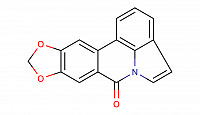Contact
Apothekerin Ruth Feilcke
phone: +49 345 55 25186
ruth.feilcke@pharmazie.uni-...
room 328
Wolfgang-Langenbeck-Str. 4
06120 Halle (Saale)
Ruth Feilcke

Even 130 years after the identification of Mycobacterium tuberculosis by Robert Koch in 1882, the disease tuberculosis (also called consumption) caused by this pathogen is still one of the most common infectious diseases worldwide. According to the WHO, one third of the global population is infected with Mycobacterium tuberculosis, of which ten percent will fall ill. In 2013, nearly 1.5 million people died from tuberculosis, many of them being co-infected with HIV. Most of the cases occur in developing countries, in which many people do not have access to adequate therapeutic measures. However, industrial countries are also affected. The number of TB cases in Germany reached a low in 2012 and has sinced increased to a (still low) incindence of 6-7/10000 inhabitants, according to reports of the Robert Koch institute in 2013. The treatment is extremely tedious and consists of several combined drugs to avoid the emergence of resistances. An infection with sensible pathogens is curable, sadly the infections with multi-resistant Mycobacterium tuberculosis have increased over the last few years.

Chemical structure of hippadine
My research work focusses on the activity of alkaloids of different Crinum-species against mycobacteria. The plants are collected and botanically and metabolically analysed. The contents are then tested for activity against different strains. Originating from these plant metabolites, more active alkaloids are synthesized and tested on the basis of structure-effect relationships. Hippadines (structure depicted) are one of the scarcely investigated substances of these Crinum-species and are the focus of the project. The aim is to synthesize antimycobacterial analogues and to determine their activity.




